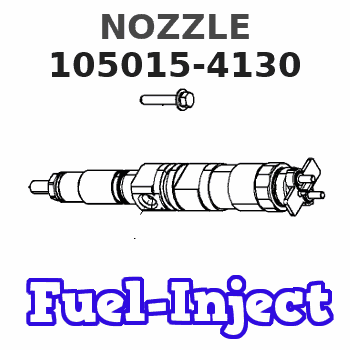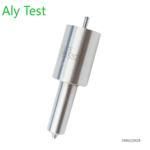Information nozzle
BOSCH
9 432 610 018
9432610018
ZEXEL
105015-4130
1050154130
ISUZU
1153110160
1153110160

Rating:
Compare Prices: .
As an associate, we earn commssions on qualifying purchases through the links below
6 PCS Fuel Injector Nozzle DLLA154S324N413 105015-4130 for ISUZU Engine 6BD1
FORWEGPAD Part Number:DLLA154S324N413,105015-4130,1050154130 || Application: For ISUZU
FORWEGPAD Part Number:DLLA154S324N413,105015-4130,1050154130 || Application: For ISUZU
6 PCS Fuel Injector Nozzle DLLA154S324N413 105015-4130 for ISUZU Engine 6BD1
DIGERTECH Part number:DLLA154S324N413 || Application:for ISUZU Engine 6BD1
DIGERTECH Part number:DLLA154S324N413 || Application:for ISUZU Engine 6BD1
fuel injector Compatible For ISUZU N F Series 4BD1 4BG1 6BG1 6BD1 6BB1 6x Injector Nozzle DLLA154S324N413
XEUOOHFX Fast start-up and smooth acceleration, full power, high reliability || High-quality materials, long life, reasonable and safe in production structure, easy to install in original data, comfortable driving without abnormal noise || Improve fuel efficiency, good atomization effect and more sufficient combustion, more accurate fuel injection, and achieve energy-saving and fuel-saving effects || Make emissions meet the standards, burn the residual oil to dry, and reduce black smoke emissions more reasonable, and optimize engine performance for a long time || Compatible For ISUZU N F Series 4BD1 4BG1 6BG1 6BD1 6BB1 6x Injector Nozzle DLLA154S324N413
XEUOOHFX Fast start-up and smooth acceleration, full power, high reliability || High-quality materials, long life, reasonable and safe in production structure, easy to install in original data, comfortable driving without abnormal noise || Improve fuel efficiency, good atomization effect and more sufficient combustion, more accurate fuel injection, and achieve energy-saving and fuel-saving effects || Make emissions meet the standards, burn the residual oil to dry, and reduce black smoke emissions more reasonable, and optimize engine performance for a long time || Compatible For ISUZU N F Series 4BD1 4BG1 6BG1 6BD1 6BB1 6x Injector Nozzle DLLA154S324N413
You can express buy:
Images:
USD 5

[22-Oct-2018]
USD 20.19

[08-Feb-2019]
USD 3.65

[10-Nov-2022]
Include in #1:
101401-0030
as NOZZLE
Cross reference number
Zexel num
Bosch num
Firm num
Name
1153110160 ISUZU
NOZZLE
C 50LC NOZZLE N (DLL-S) N
C 50LC NOZZLE N (DLL-S) N
5153110160 ISUZU
NOZZLE
A C 50LC NOZZLE N (DLL-S) N
A C 50LC NOZZLE N (DLL-S) N
Information:
Engine Performance
Poor vehicle performance is traditionally believed to be the result of a lack (or loss) of engine performance, when in fact the engine is only one of numerous factors that influence the overall performance of a vehicle. The previous section on fuel economy describes the factors that determine the power demand on an engine. The engine has no control over the demand made upon it by the vehicle or the operator.A vehicle that requires 225 hp (168 kW) to operate at 55 mph (88 km/h) will get worse fuel economy than a vehicle that requires only 175 hp (130 kW).These same factors also affect the amount of power available to perform additional work such as climb a grade or pass another vehicle. With a 310 hp (231 kW) engine, the first vehicle will have only 85 hp (63 kW) available to perform additional work compared to 135 hp (100 kW) on the second vehicle (mentioned above).If you feel you have a vehicle performance problem, first consider the impact of vehicle efficiency and operating characteristics (vehicle speed, design, etc.), on power demand before questioning engine performance. In the case of poor fuel economy, the engine is not likely to be the cause without the presence of excessive exhaust smoke and/or a significant loss of power.If you feel you have a valid engine performance problem, contact an authorized Caterpillar dealer for assistance. If your engine is under warranty, then the Caterpillar warranty or extended service coverage will cover the cost of resolving a valid engine performance deficiency.However, if the engine is not found at fault, all costs incurred will be the responsibility of the owner.
Adjustment of the fuel system outside Caterpillar specified limits will not improve fuel efficiency and can result in damage to the engine.
Performance Analysis Report (PAR)
PAR complements a good preventive maintenance program and Caterpillar recommends a regularly scheduled PAR analysis to monitor the condition and maintenance requirements of your engine and to ensure your engine is operating at peak efficiency.Potential problems can be identified early, thus preventing unnecessary repair costs and unscheduled downtime. Consult your Caterpillar dealer for complete information and assistance in establishing a PAR program for your engine.PAR reflects the results of various tests normally conducted by your Caterpillar dealer for the purpose of: * confirming your engine is operating efficiently and within specification.* identifying potential problems.* determining components or systems that should be adjusted, replaced, etc.Approximately 80 to 85% of your truck engine's operation and maintenance cost is the cost of the fuel. Therefore, substantial cost reductions can be achieved by keeping your engine operating at peak efficiency. The fuel economy and performance of the engine is affected by the truck specifications, how it is operated and the condition of the engine. Each plays an important part in minimizing your overall owning and operating cost.Caterpillar has an exclusive Performance Analysis Report (PAR) Program that can help you keep the engine portion of this equation up to PAR. The PAR Program uses a chassis
Poor vehicle performance is traditionally believed to be the result of a lack (or loss) of engine performance, when in fact the engine is only one of numerous factors that influence the overall performance of a vehicle. The previous section on fuel economy describes the factors that determine the power demand on an engine. The engine has no control over the demand made upon it by the vehicle or the operator.A vehicle that requires 225 hp (168 kW) to operate at 55 mph (88 km/h) will get worse fuel economy than a vehicle that requires only 175 hp (130 kW).These same factors also affect the amount of power available to perform additional work such as climb a grade or pass another vehicle. With a 310 hp (231 kW) engine, the first vehicle will have only 85 hp (63 kW) available to perform additional work compared to 135 hp (100 kW) on the second vehicle (mentioned above).If you feel you have a vehicle performance problem, first consider the impact of vehicle efficiency and operating characteristics (vehicle speed, design, etc.), on power demand before questioning engine performance. In the case of poor fuel economy, the engine is not likely to be the cause without the presence of excessive exhaust smoke and/or a significant loss of power.If you feel you have a valid engine performance problem, contact an authorized Caterpillar dealer for assistance. If your engine is under warranty, then the Caterpillar warranty or extended service coverage will cover the cost of resolving a valid engine performance deficiency.However, if the engine is not found at fault, all costs incurred will be the responsibility of the owner.
Adjustment of the fuel system outside Caterpillar specified limits will not improve fuel efficiency and can result in damage to the engine.
Performance Analysis Report (PAR)
PAR complements a good preventive maintenance program and Caterpillar recommends a regularly scheduled PAR analysis to monitor the condition and maintenance requirements of your engine and to ensure your engine is operating at peak efficiency.Potential problems can be identified early, thus preventing unnecessary repair costs and unscheduled downtime. Consult your Caterpillar dealer for complete information and assistance in establishing a PAR program for your engine.PAR reflects the results of various tests normally conducted by your Caterpillar dealer for the purpose of: * confirming your engine is operating efficiently and within specification.* identifying potential problems.* determining components or systems that should be adjusted, replaced, etc.Approximately 80 to 85% of your truck engine's operation and maintenance cost is the cost of the fuel. Therefore, substantial cost reductions can be achieved by keeping your engine operating at peak efficiency. The fuel economy and performance of the engine is affected by the truck specifications, how it is operated and the condition of the engine. Each plays an important part in minimizing your overall owning and operating cost.Caterpillar has an exclusive Performance Analysis Report (PAR) Program that can help you keep the engine portion of this equation up to PAR. The PAR Program uses a chassis





